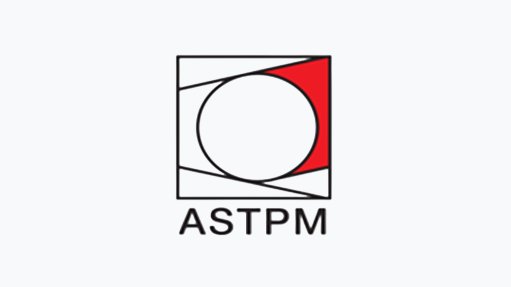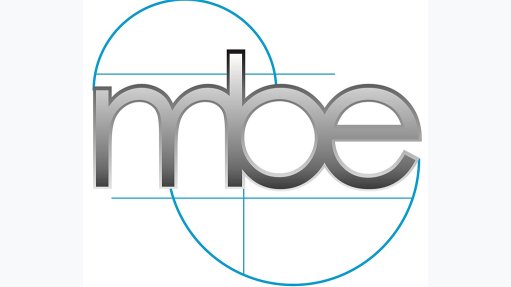Skills shortage threatening mine safety
The frequency and the duration of training in the mining industry is under pressure, owing to a declining skills base, notes information technology and solutions provider Dimension Data Middle East and Africa GM: Vertical Solutions Bruce Taylor.
He explains that this could cause companies to rush workers through training processes, which poses a major threat to worker safety.
“There are stringent training and safety policies at mines, which are traditionally upheld and rigorously enforced, but pressure to secure sufficient staff is driving the skills shortage, which is underscored by the impact of HIV and health issues in the current mining workforce,” Taylor adds.
Therefore, a move towards automated mining techniques is evident in the industry, which could cause job losses in a country where job creation is much needed.
“As mines become increasingly auto- mated, additional safety challenges arise, as more equipment is deployed underground, with the risk of causing more health and safety incidents.”
Taylor notes that, while modernisation drives new innovative techniques for mining and extracting resources, it can also expose mines to untried and untested new mechanisms. However, reducing the workforce decreases the number of employees present, and hence, the risk of humans being involved in accidents.
“The declining skills base is also causing a tendency among some workers to take shortcuts when delivering on production, resulting in safety being overlooked at times, at the expense of workers’ wellbeing.
“While most mines evolve their decisions around safety aspects, current safety initiatives are in most cases manually driven and, in some cases, old fashioned with regard to training, messaging, briefings and post- incident inspections, retraining and seismic-event monitoring solutions,” Taylor adds.
“There is a need for mining environments to shift towards a more proactive and modern safety-management approach. This will enable proactive participation in worker safety and technology use, such as digital safety signage, auto- mated alerting systems, collision avoidance solutions, gas detection alerting, safety event auto alerting, worker tracking, mustering management solu- tions, mobile device safety auditing and reactive employee-based event alerting.”
He further highlights that mines are faced with aging asset bases as they try to reduce the total cost of ownership of assets as a factor of production costs, thereby decreasing long-term total cost of ownership as a percentage of production costs.
“Increasing the life of assets is a key driver in the profitability and long-term sustainability of any mining business. However, such an approach can cause more equipment failures over time – a shortening of the mean time between failure (MTBF) – which may generate higher maintenance costs and cause frequent health and safety incidents.”
It also renders mining operations unable to modernise and adopt more proactive and leading-edge solutions to improve safety and operations, as the aging asset base is unable to manage upgrade situations with modern approaches, owing to its outdated built-in capability, says Taylor.
“These risks can be managed by adopting a balanced approach to asset replacement and asset optimisation. You cannot simply rip and replace an information-and-communication-technology asset every three years; this is extremely capital intensive and costly for the business and can increase the cost of production.”
Mines should adopt a long-term strategy for the maintenance and replacement of assets, or parts thereof, which will help balance the cost of the asset against the cost of the MTBF and the cost of the production lost during mine stoppages.
He stresses that mines need to balance a modernisation-and-adoption process against their current asset-replacement portfolio to guard against hindering new techniques that can, in the medium term, reduce production costs, as each asset adds value to the production process.
“This needs to be assessed against downtime and cost of replacement, while condition-based monitoring and maintenance are applied to ensure the lifetime of the asset is managed against the cost of production and the cost of innovation at any given time. IT-enabled asset condition-based monitoring modelling is a technique that may be used to enable these processes in the mining business.”
Metals and Minerals Solution
Dimension Data developed its Metals and Minerals Framework solution towards the end of 2011 and continuously updates the technology to further improve safety and other value chain elements across the metals and minerals industry.
The Proactive Safety Management Solution (PSMS) is currently driven from the company’s South African operation and can be globally implemented. The company aims to drive the service from South Africa and then adopt it long-term across all its operating divisions worldwide, where metals and minerals, oil and gas, and industrial-type companies are based.
“Our PSMS is unique, as it adopts a multi- disciplinary approach to proactive safety management. It considers the end-to-end delivery of the solution – from the connected operations environment and the monitoring and management solution suite, to its integra- tion with the mining business information system,” Taylor notes.
The solution drives an information-based approach to proactively manage worker safety across the mine – at underground, openpit, plant, and above-ground administrative business processes.
It features a command-and-control approach to safety management that enables an integrated business-process approach. This involves cross-business disciplines interacting to manage safety in the workforce, says Taylor.
“This solution serves the health and safety industry by proactively monitoring the wellbeing and location of every mineworker, enabling a planned approach to evacuation and displaying employees’ locations at any given time, such as during a gas leak or fall-of-ground incident.
When an incident occurs, the PSMS enables evacuation teams to determine whether there are any workers in the area. It, therefore, prevents further endangerment of lives by not deploying people to dangerous situations when they are not needed. It also enables rescue workers to focus on the actual area where affected employees were last monitored, he adds.
Taylor notes that the system has been well received globally and, owing to the nature and depth of the mining environment in South Africa is still in feasibility assessment phase. “We are piloting its use at a local mine, based on vehicle tracking rather than people tracking.”
One of the many uses of the solution is the ability to track people and assets, he highlights, noting that an underground wireless network is needed for full adoption of the system. “This is, understandably, a costly exercise and creates an initial barrier to rapid adoption.”
The use of an underground network needs to be expanded to cater for mul- tiple operational uses, and this will then make the case for change easier to justify to the mine capital expenditure committees, Taylor explains.
He adds that labour unions’ views on people tracking, which it regards as a work-performance tool rather than a safety tool, needs to change to ensure the use of the method for worker safety.
“As it becomes more widely adopted, we believe that the PSMS will take off in the industry and become even more widely adopted,” Taylor concludes.
Article Enquiry
Email Article
Save Article
Feedback
To advertise email advertising@creamermedia.co.za or click here
Comments
Press Office
Announcements
What's On
Subscribe to improve your user experience...
Option 1 (equivalent of R125 a month):
Receive a weekly copy of Creamer Media's Engineering News & Mining Weekly magazine
(print copy for those in South Africa and e-magazine for those outside of South Africa)
Receive daily email newsletters
Access to full search results
Access archive of magazine back copies
Access to Projects in Progress
Access to ONE Research Report of your choice in PDF format
Option 2 (equivalent of R375 a month):
All benefits from Option 1
PLUS
Access to Creamer Media's Research Channel Africa for ALL Research Reports, in PDF format, on various industrial and mining sectors
including Electricity; Water; Energy Transition; Hydrogen; Roads, Rail and Ports; Coal; Gold; Platinum; Battery Metals; etc.
Already a subscriber?
Forgotten your password?
Receive weekly copy of Creamer Media's Engineering News & Mining Weekly magazine (print copy for those in South Africa and e-magazine for those outside of South Africa)
➕
Recieve daily email newsletters
➕
Access to full search results
➕
Access archive of magazine back copies
➕
Access to Projects in Progress
➕
Access to ONE Research Report of your choice in PDF format
RESEARCH CHANNEL AFRICA
R4500 (equivalent of R375 a month)
SUBSCRIBEAll benefits from Option 1
➕
Access to Creamer Media's Research Channel Africa for ALL Research Reports on various industrial and mining sectors, in PDF format, including on:
Electricity
➕
Water
➕
Energy Transition
➕
Hydrogen
➕
Roads, Rail and Ports
➕
Coal
➕
Gold
➕
Platinum
➕
Battery Metals
➕
etc.
Receive all benefits from Option 1 or Option 2 delivered to numerous people at your company
➕
Multiple User names and Passwords for simultaneous log-ins
➕
Intranet integration access to all in your organisation














